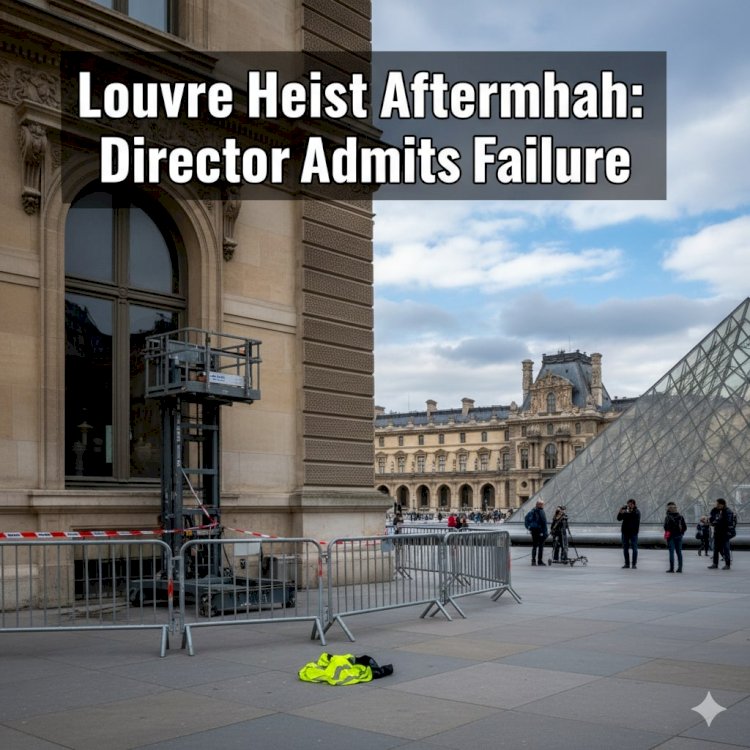National Outcry as Louvre Reopens Amid Hunt for Daring Jewel Thieves

PARIS – Three days after one of the most brazen museum heists in recent memory, the Louvre Museum reopened its doors on Wednesday, even as a massive police operation scrambles to locate the priceless jewels and the audacious gang of thieves who executed a four-minute daylight robbery.
The theft, estimated to be valued at around €88 million (approx. $94 million USD) in material worth—not including historical value—has ignited a firestorm of national debate over security at France’s cultural institutions. Eight pieces of Napoleonic-era jewellery, part of the French Crown Jewels collection, were snatched from the Apollo Gallery on Sunday morning, shortly after the museum opened.
Focus on Security Failures
The immediate aftermath has seen French authorities and Louvre leadership face intense public and political scrutiny. The thieves reportedly used a furniture hoist on the river-facing façade to reach a first-floor window, which they breached before using an angle grinder to smash two display cases. The speed and method of the operation—taking less than four minutes inside the gallery—have raised fundamental questions about the museum's security apparatus.
On Wednesday, Louvre President and Director Laurence des Cars appeared before the French Senate's culture committee, where she acknowledged a "terrible failure." Des Cars confirmed that while internal alarms worked, security camera coverage of the museum’s external walls was "highly insufficient." She revealed she had offered her resignation to the Culture Minister, Rachida Dati, who refused it.
Culture Minister Dati, while insisting the existing security system did not "fail," has nonetheless launched an administrative inquiry and ordered an immediate reassessment of security across all French cultural sites. The government has confirmed that the stolen works are not covered by private insurance, as the state acts as its own insurer for national collections.
The Manhunt and Missing Treasures
A team of approximately 100 investigators from the Paris judicial police's specialised unit (BRB) is now leading the hunt. While no arrests have been announced, authorities are examining forensic evidence, including DNA traces, left at the scene on a high-visibility vest and on Empress Eugénie's emerald-set crown—a piece the robbers dropped and damaged during their escape on motorbikes. Police also recovered the hoist, a power saw, and motorcycles with licence plates, which the gang had failed to set on fire as they attempted to cover their tracks.
Experts, however, are pessimistic about the likelihood of recovering the historic jewels intact. Prosecutor Laure Beccuau has publicly warned the thieves against dismantling the artifacts, but criminologists suggest the immense value of the diamonds and precious stones makes it likely they will be broken up and sold on the global black market, potentially vanishing from history forever.
The Apollo Gallery remains closed to the public as the investigation continues, a stark reminder of the "attack on heritage" that has shocked France and the international art world. Visitors queued outside the reopened museum expressed a mix of disbelief and determination to see the masterpieces that remain, with many questioning how such a vulnerability could exist at the world's most-visited museum.

 content-team
content-team 


















